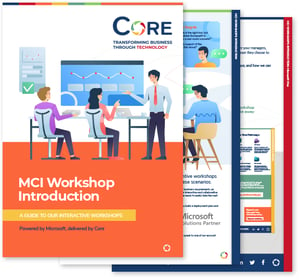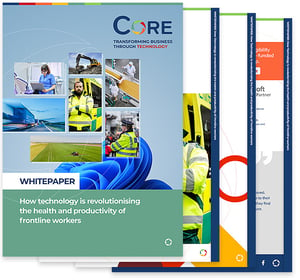In a climate of economic pressure, shifting workforce models, and rapid technological advancement, IT leaders are under more scrutiny than ever. Budget holders want to see outcomes.
Boards want agility and innovation. Teams want tools that work the way they do. So as we move into FY25–26 planning, the question isn't simply "What technology do we need?"—it's "What outcomes are we trying to achieve, and how can IT enable them?"
The Shift from Tech-Centric to Outcome-Centric Planning
Historically, IT roadmaps were shaped by infrastructure lifecycles, system upgrades, or license renewals. But today’s business environment demands more. Organisations are increasingly shifting to outcome-driven planning—where IT investments are directly linked to business goals like:
- Enabling secure hybrid working
- Improving customer or citizen experience
- Accelerating digital services
- Reducing operational risk and cost
- Empowering staff with automation and AI
This means IT leaders need to think in outcomes, not just outputs. That shift transforms how you plan, prioritise, and partner.
What Does an Outcome-Driven IT Roadmap Look Like?
It’s structured around impact, not features. Instead of leading with "we need to implement Copilot or move to Azure," an outcome-driven roadmap starts with "we need to reduce the time staff spend on admin tasks" or "we need to make compliance reporting less manual and error-prone."
From there, technology decisions are mapped back to tangible benefits, whether that’s time savings, reduced costs, better customer satisfaction, or improved employee experience.
It also demands cross-functional input. The most effective roadmaps aren’t built in silos—they’re co-created with business leaders, frontline users, and external advisors who understand the evolving tech landscape.
Practical Tips for FY25–26 Planning
1. Start with the big picture
Where is your organisation going? What are your business priorities for the next 12–18 months? What challenges are emerging?
2. Engage beyond IT
Bring in stakeholders from operations, HR, finance, customer services, and compliance to understand their pain points and goals.
3. Review your tech estate with fresh eyes
Are you fully using the Microsoft tools you’re already licensed for? Could automation or Copilot reduce repetitive tasks? Are there quick wins hiding in plain sight?
4. Think modular, not monolithic
Build flexibility into your roadmap. Plan for iterative improvements and pilot phases rather than massive ‘big bang’ transformations.
5. Align governance and support
Make sure any new tools or services are underpinned by the right security, training, and managed support to ensure long-term success.
Technology is the Tool. Outcomes are the Goal.
Done well, IT becomes a force multiplier—freeing up time, improving experiences, and helping your organisation move faster and smarter. That only happens when technology is tightly aligned to outcomes.
At Core, we work with public and private sector organisations across the UK to co-create roadmaps that don’t just tick technical boxes—but deliver measurable business value. Whether it’s supporting AI readiness, simplifying Microsoft licensing, or delivering managed services, we’re here to help IT become the enabler it was always meant to be.
Ready to turn your IT roadmap into a business accelerator for FY25–26? Let’s talk.






